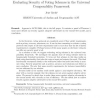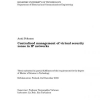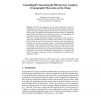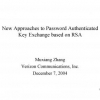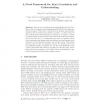ACNS
2004
Springer
14 years 6 months ago
2004
Springer
In the literature, voting protocols are considered secure if they satisfy requirements such as privacy, accuracy, robustness, etc. It can be time consuming to evaluate a voting pr...
ACNS
2004
Springer
14 years 6 months ago
2004
Springer
ACNS
2004
Springer
14 years 6 months ago
2004
Springer
Motivated by the conflict between authenticity and privacy in the digital signature, the notion of limited verifier signature was introduced [1]. The signature can be verified by a...
ACNS
2004
Springer
14 years 6 months ago
2004
Springer
The concept of group signature allows a group member to sign message anonymously on behalf of the group. In the event of a dispute, a designated entity can reveal the identity of a...
ACNS
2004
Springer
14 years 6 months ago
2004
Springer
One of the few quantitative metrics used to evaluate the security of a cryptographic file system is the key length of the encryption algorithm; larger key lengths correspond to hig...
ACNS
2004
Springer
14 years 6 months ago
2004
Springer
A general technique of batch verification for equality of discrete logarithms is proposed. Examples of batching threshold decryption schemes are presented based on threshold versio...
ACNS
2004
Springer
14 years 8 months ago
2004
Springer
We study the data privacy of cryptosystems with All-or-Nothing transform (AONT). An AONT is an efficient computable transform with two properties: Given all the bits of its output...
ACNS
2004
Springer
14 years 8 months ago
2004
Springer
ACNS
2004
Springer
14 years 8 months ago
2004
Springer
Abstract. We propose a novel framework named Hidden Colored PetriNet for Alert Correlation and Understanding (HCPN-ACU) in intrusion detection system. This model is based upon the ...
ACNS
2004
Springer
14 years 8 months ago
2004
Springer
Cryptographic protocol design in a two-party setting has often ignored the possibility of simultaneous message transmission by each of the two parties (i.e., using a duplex channe...
